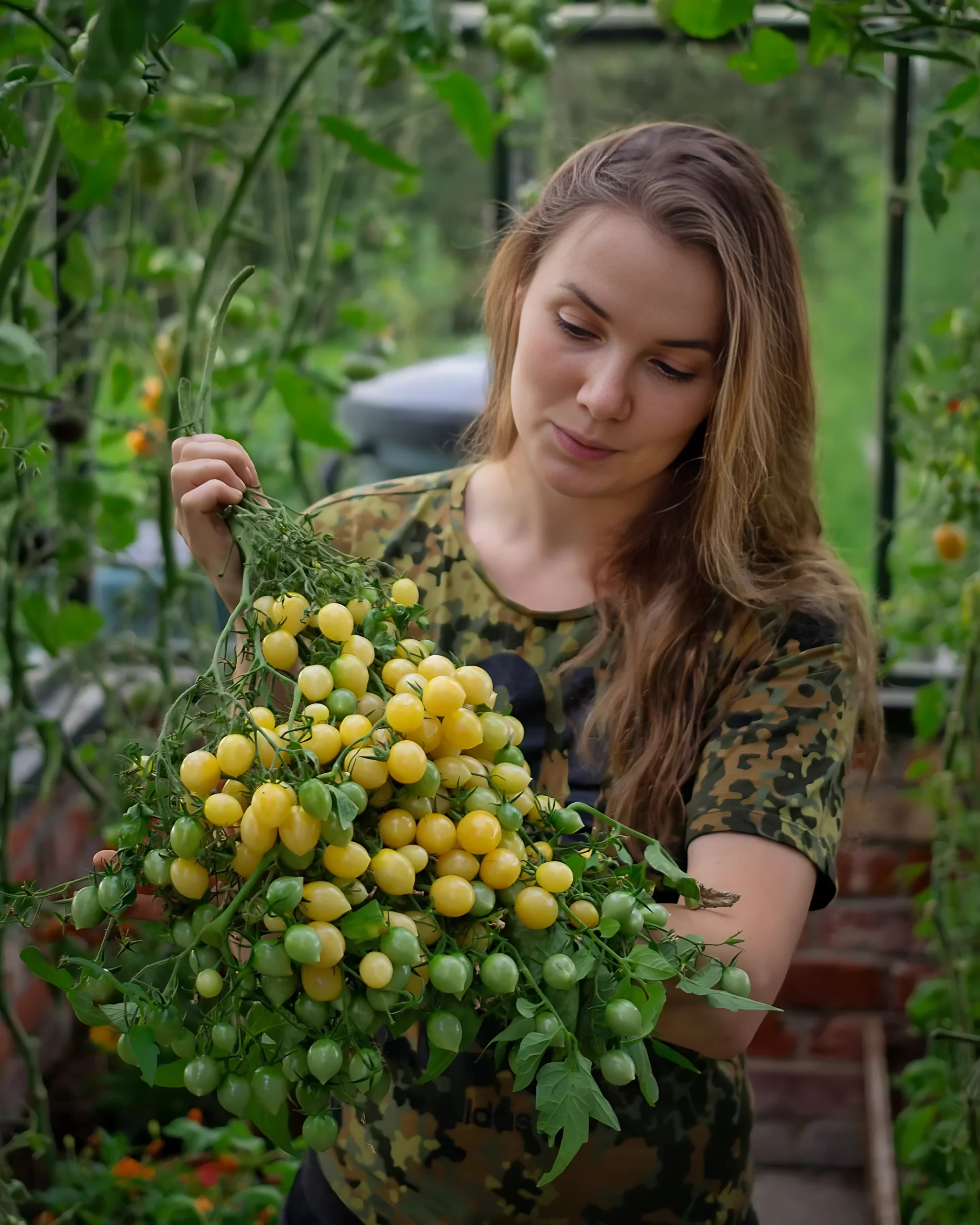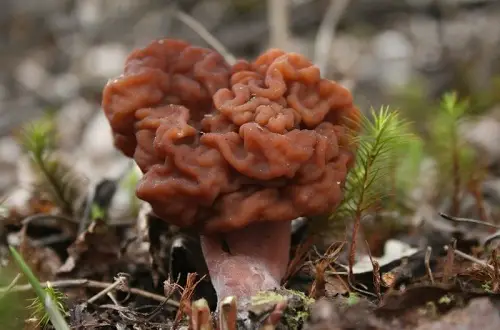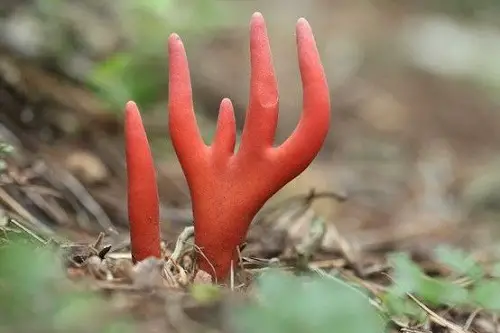Do you know about the Most Toxic Mushrooms Found Easily in Gardens. This list will keep you updated for good.
When it comes to mushroom identification, it is always better to err on the side of caution. Here’s a list of the Most Toxic Mushrooms Found Easily in Gardens that you should absolutely avoid interacting with.
Most Toxic Mushrooms Found Easily in Gardens
1. Death Cap Mushroom

Botanical Name: Amanita phalloides
The Death Cap is one of the Most Toxic Mushrooms has a greenish-yellow cap and a white stem with a ring around it. It can easily be mistaken for edible mushrooms like the Paddy Straw mushroom or the Straw mushroom.
This mushroom is commonly found in Europe and North America, and its toxins can cause severe liver damage and organ failure.
2. Destroying Angel Mushroom
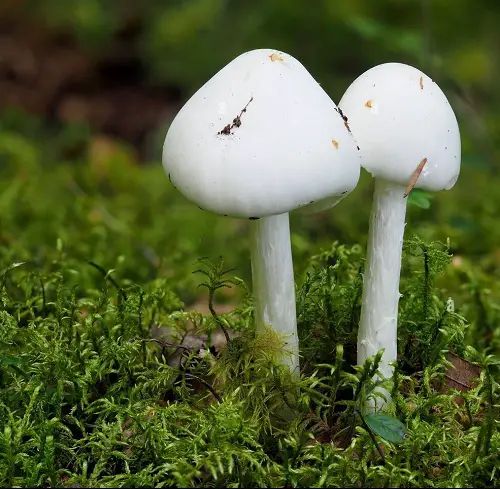
Botanical Name: Amanita virosa
The Destroying Angel mushroom belongs to the Amanita family and contains amatoxins that can cause severe liver damage and organ failure.
The Destroying Angel mushroom has a white cap and a white stem with a ring around it, making it easy to confuse with edible mushrooms like the Meadow mushroom.
3. Fool’s Mushroom

Botanical Name: Amanita verna
The Fool’s mushroom is another of the Most Toxic Mushrooms and is a member of the Amanita family, and is often mistaken for edible mushrooms like the Field mushroom.
This mushroom contains amatoxins that can cause severe liver damage and organ failure, and there is no known antidote for its toxins. The Fool’s mushroom has a white cap and a white stem with a ring around it.
4. Deadly Webcap Mushroom
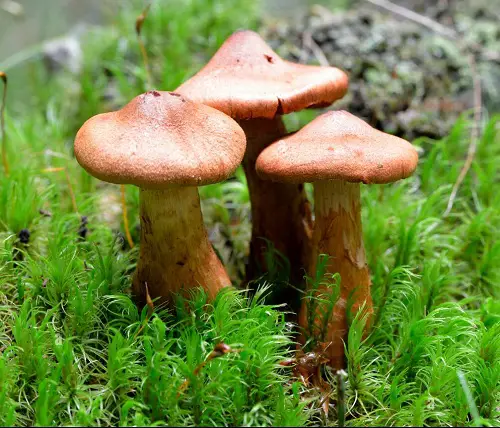
Botanical Name: Cortinarius rubellus
The highly poisonous Deadly Webcap mushroom is common in gardens and wooded areas. It contains the toxin orellanine, which can cause kidney failure and other health problems.
The Deadly Webcap mushroom has a brownish-red cap and a white stem with a ring around it.
5. Panther Cap Mushroom
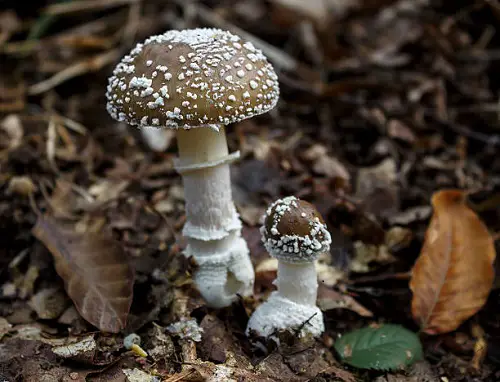
Botanical Name: Amanita pantherina
The toxins in the Death Cap and Destroying Angel mushrooms are also present in the Panther Cap mushroom. It has a reddish-brown cap and a white stem with a ring around it.
People confuse these Most Toxic Mushrooms with the Fly Agaric mushroom, which is also toxic but less deadly.
6. False Morel
Botanical Name: Gyromitra esculenta
False morels are highly toxic mushrooms that contain a compound called gyromitrin, which can cause severe health problems or even death. Differentiating false morels from other mushrooms can be challenging, as they can resemble some edible varieties, such as the true morel.
They have a brain or saddle-like cap with folds and wrinkles along with a whitish or yellowish stem and spores.
7. Autumn Skullcap
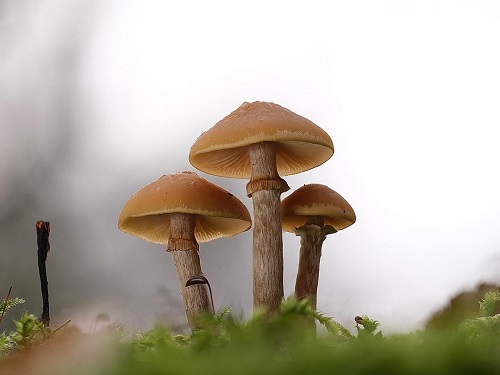
Botanical Name: Galerina marginata
Autumn skullcap closely resembles many edible species. However, they are equally toxic due to the fact that they contain the same lethal toxins as death cap mushrooms.
They may result in severe liver failure or damage, which could be fatal.
To identify the autumn skullcap, you can notice the cap, which is typically brownish or yellowish-brown in color. It also has a distinctive “nipple” or central depression.
Note: It’s important to note that relying on visual identification alone can be risky.
8. Conocybe Filaris
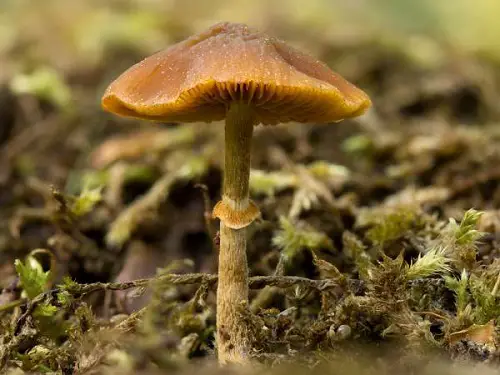
Botanical Name: Pholiotina rugosa
These Most Toxic Mushrooms contain compound amatoxins – which can cause severe liver and kidney damage and can be fatal if ingested in large enough quantities.
So, to identify Conocybe filaris, you can either notice its bell-like cap that is usually brown or yellowish-brown in color and is typically less than 2-3 cm in diameter.
Alternatively, one can notice its slender stem, which has a slight curve or bend.
9. Poison Fire Coral
Botanical Name: Podostroma Cornu-damae
Poison fire coral is common in coral reefs and can cause a painful and sometimes life-threatening reaction when it comes into contact with the skin.
One can assume how toxic it is from the fact that it is the world’s second deadliest fungus.
10. Deadly Dapperling
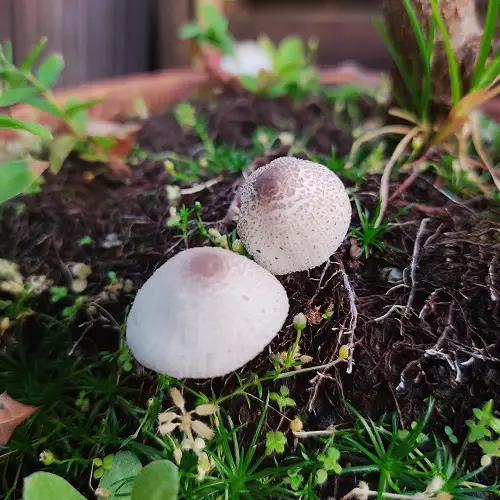
Botanical Name: Lepiota brunneoincarnata
To identify these Most Toxic Mushrooms, you can start by observing the stem, which is tall, thin, and smooth and has a ring or annulus around it.
The other way to identify it is by its bell-shaped but flattened reddish-brown or simple brown cap.
11. Angel Wing
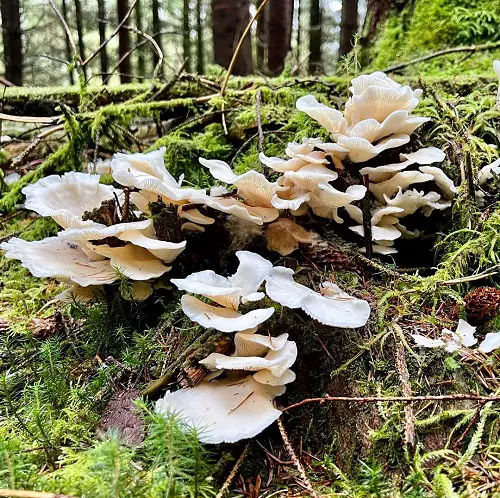
Botanical Name: Pleurocybella porrigens
Although most people do not consider angel wing fungi to be toxic, some people may react to them allergically. They have thin, white, fan-shaped fruiting bodies that grow in overlapping clusters.
12. Fly Agaric
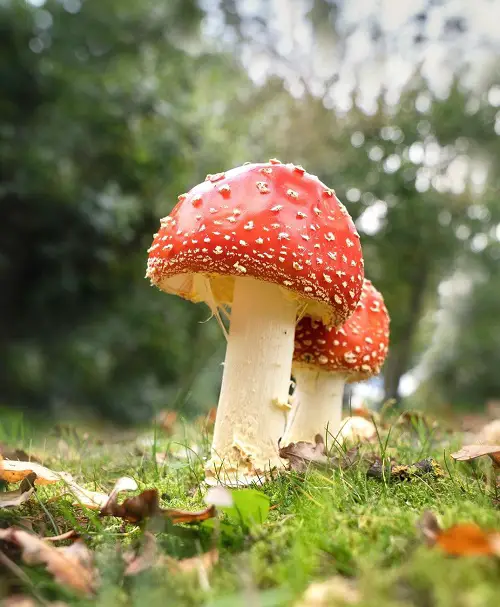
Botanical Name: Amanita muscaria
Fly agaric has several psychoactive compounds, including muscimol and ibotenic acid – that make it poisonous.
These Most Toxic Mushrooms typically have bright red caps that are covered in white or yellowish warts, giving them a distinctive appearance.
Note: There are several other species of mushrooms that have red or orange caps and white spots, so it’s important to have a good understanding of the specific characteristics of each species before consuming any wild mushrooms.
Read the List of Mushroom Types from A-Zhere
13. Lepidella
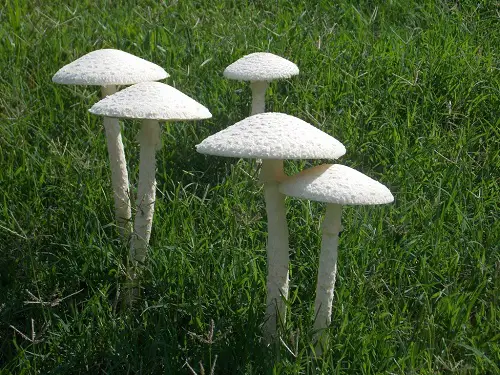
Botanical Name: Saproamanita thiersii
Lepidella is a genus of mushrooms that contains several species, some of which are toxic while others are edible.
To determine the toxicity of a specific Lepidella species- you may see its cap, which is usually dry and scaly, or you can also check its white, pink, or grayish gills, which are usually attached to the stem.
14. False Champignon
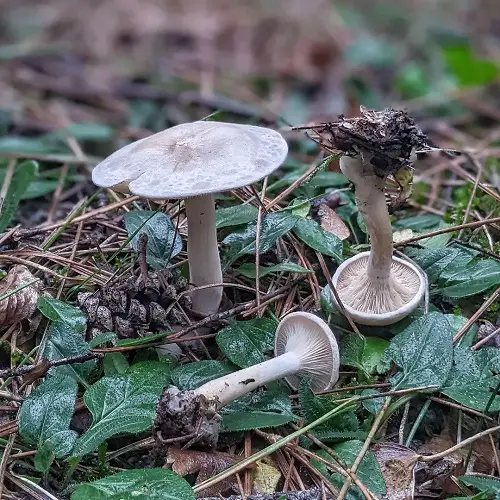
Botanical Name: Clitocybe rivulosa
The term “false champignon” may refer to several different mushrooms, some of which are edible while others are toxic. These Most Toxic Mushrooms have a white or light brown scaly cap and can range in size from small to medium.
The most interesting thing about this toxic mushroom is that it can make someone who consumes it sweat, tears, and salivation – thus, it is also known as the sweating mushroom.
15. Jack-o’Lantern

Botanical Name: Omphalotus illudens
People confuse Jack-o’Lantern with the edible chanterelle mushroom (Cantharellus cibarius) due to its similar appearance. However, it has gills that glow in the dark and grow in clusters at the base of trees.
Consuming them can cause severe gastrointestinal symptoms, and in very rare cases, they can even lead to death.
16. False Parasol
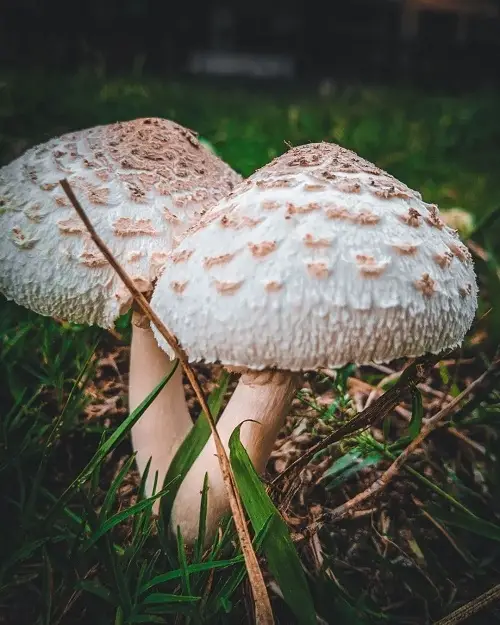
Botanical Name: Chlorophyllum molybdites
Don’t get confused between the edible parasol mushroom (Macrolepiota procera) and this toxic false parasol, as they both look very similar.
Due to its appearance and closeness to populated areas, people frequently end up eating these Most Toxic Mushrooms – which can result in health issues and problems.
Common Flowers that are Poisonous | Toxic Flowers
FAQs
1. Can Toxic Mushrooms Be Found in All Regions?
While some of these toxic mushrooms have a broader distribution, their presence can vary depending on the region and habitat. It’s important to be cautious and informed about the types of mushrooms commonly found in your area.
2. How to Protect My Family and Pets From These Toxic Mushrooms?
To minimize the risk of accidental exposure, regularly inspect your garden and outdoor spaces for unfamiliar mushrooms. Teach children not to touch or consume wild mushrooms and keep pets away from areas where these mushrooms may grow.
3. Are There Any Safe Methods for Mushroom Identification?
Properly identifying mushrooms requires in-depth knowledge and expertise. If you’re unsure about a mushroom’s edibility, it’s best to avoid it altogether. Consider joining local mycological clubs or consulting with experienced mycologists for guidance.
4. What to Do if I Suspect Someone Has Ingested a Toxic Mushroom?
If you suspect mushroom poisoning, seek medical help immediately. Do not wait for symptoms to appear. Collect a sample of the mushroom, if possible, to aid in identification and treatment.

